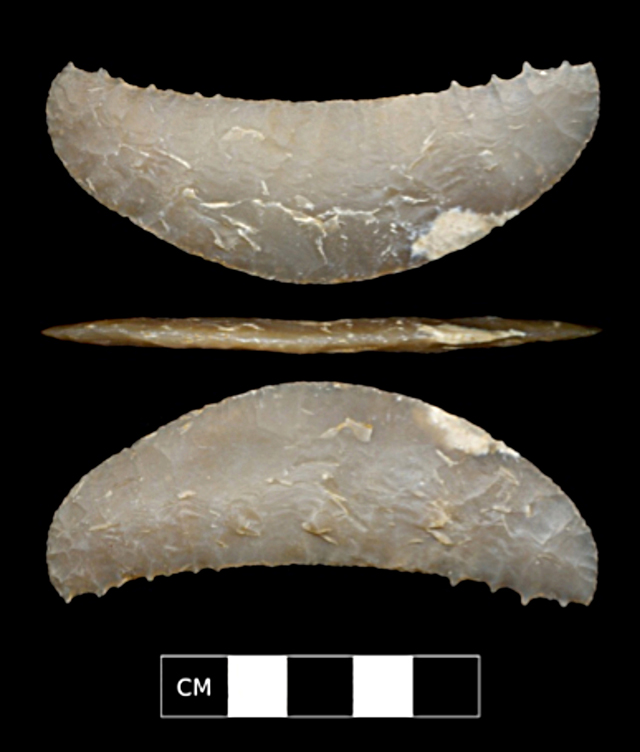
Primitive artifacts, including barbed points and abraded bone tool fragments, were uncovered at archaeological sites on the Channel Islands, a shell midden (mound) on Santa Rosa Island and at the Cardwell Bluffs sites on San Miguel Island. They herald prehistoric coastal migrations into the Americas from Asia.
The findings are summarized in the Science article, “Paleoindian Seafaring, Maritime Technologies, and Coastal Foraging on California’s Channel Islands.”
According to Braje, “The lives of these early coastal foragers seem to have been those of shellfish gathering, bird hunting, fishing and the production of a unique set of maritime hunting equipment.” His work was recently featured in a San Francisco Chronicle cover story.
These settlers’ way of life was very different from that of the prehistoric Big Game Hunter peoples previously thought to have been the first to enter the New World via the Bering Strait.
Braje and his colleagues uncovered a series of 12,000-year-old stone tool production and maritime hunting and foraging sites. The discoveries are crucial because they bridge an important chronological gap. Missing until now were subsistence and settlement Channel Island locations older than 11,500 years.

The 12,000-year-old artifacts Braje and his fellow scientists unearthed are tantalizing evidence of an early coastal migration in the New World. Importantly, they support a similar discovery in the 1990s, dated to 14,500 years ago at Monte Verde on the southern tip of Chile.
Combined, the discoveries at Monte Verde and the Channel Islands refute the notion that it was Big Game Hunters who were the first to cross the Bering Land Bridge, head from Siberia to North America, settle inland, and feed on mastodons, mammoths, and the like.
The groundwork of the Science article began in part in the summer of 2003 when, as Braje tells it, “The story on the Channel Islands started to become even more interesting.” While surveying the south coast of San Miguel, he and Jon Erlandson of the University of Oregon stumbled across a series of sites situated above a chert outcrop. Chert is microcrystalline sedimentary rock whose sharp fractures were used by early peoples to make cutting tools.
“What we found amazed us—a series of 12,000-year-old stone tool production sites,” Braje says. “Years of research had convinced us that the earliest chipped stone tools on the islands were crude, informal, and expedient. But the tools at these Cardwell Bluffs sites were thin, delicate, and exquisitely made by expert flint-knappers. In total, we have analyzed more than 400 stone projectile points, knives, and transverse projectile points (crescents).”
That same summer, Braje and Erlandson were lunching on the bluffs and decided on the spur of the moment to head to western Santa Rosa. The islands were not connected to the mainland 12,000 years ago, but lower sea levels at that time meant one could walk from eastern San Miguel to western Santa Rosa. In the years following 2003, further evidence turned up of Paleocoastal peoples, their technologies and a comparatively diversified maritime economy.
In addition, says Braje, “the Santa Rosa sites have produced an amazing array of faunal remains, suggesting that these technologies were used to hunt a diverse range of waterfowl and seabirds, and perhaps, for spearfishing.”
Braje has worked on archaeological projects all over North America, but most of his research has centered on the Northern Channel Islands and along mainland coastal California and Oregon. He is the author of Modern Oceans, Ancient Sites, which examines 10,000 years of human interactions with Channel Island marine and terrestrial ecosystems.
Currently, Braje is lead editor of the forthcoming volume, Human Impacts on Seals, Sea Lions, and Sea Otters, which for the first time brings together a diverse group of scientists to probe the deep history, ecology, and human exploitation of North Pacific sea mammal communities.